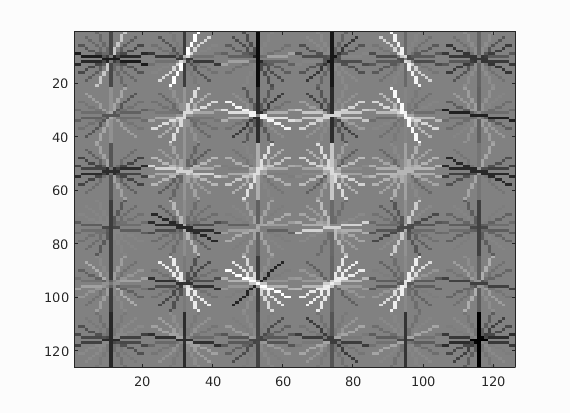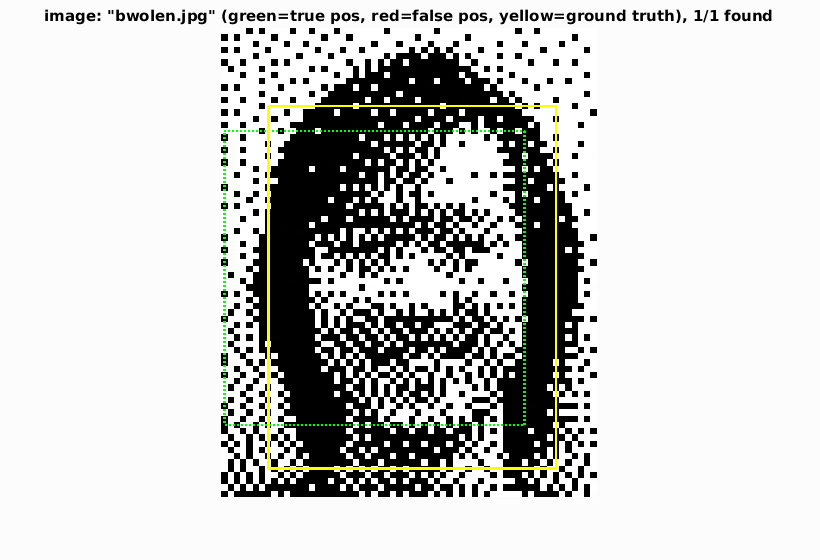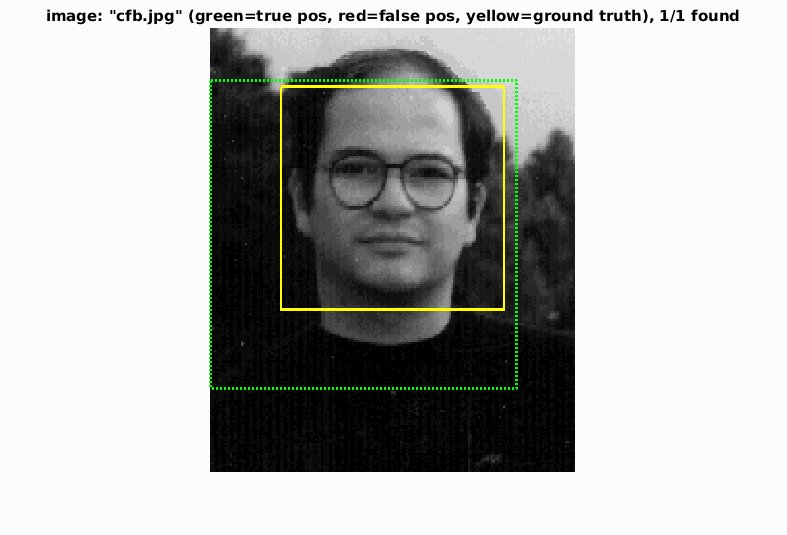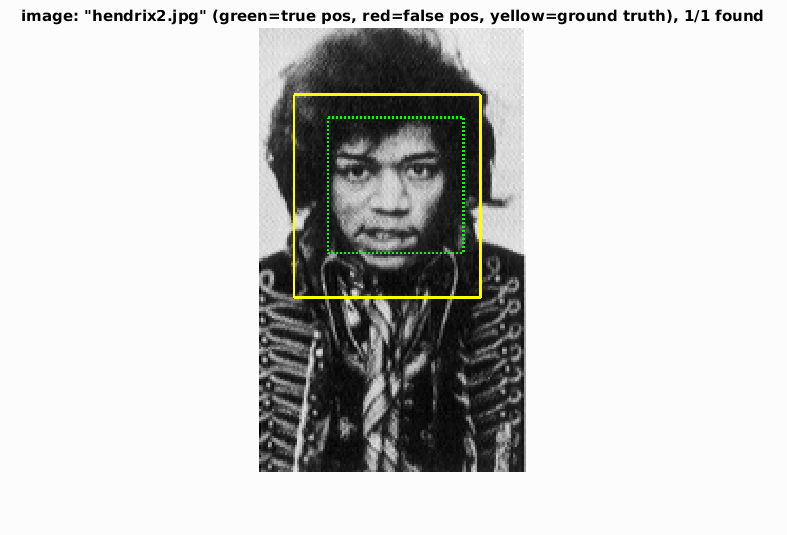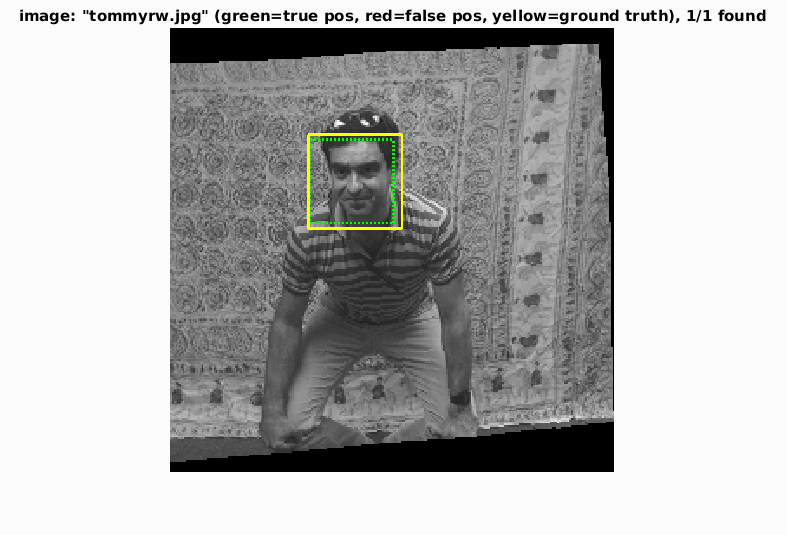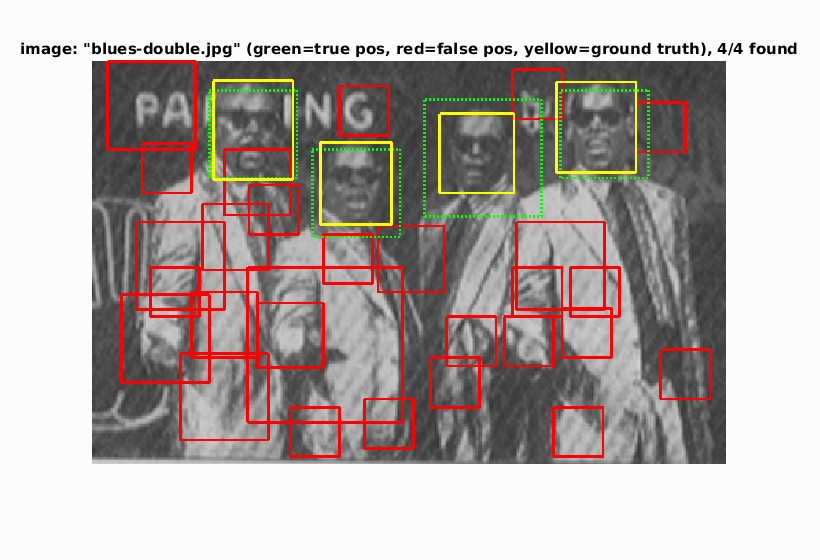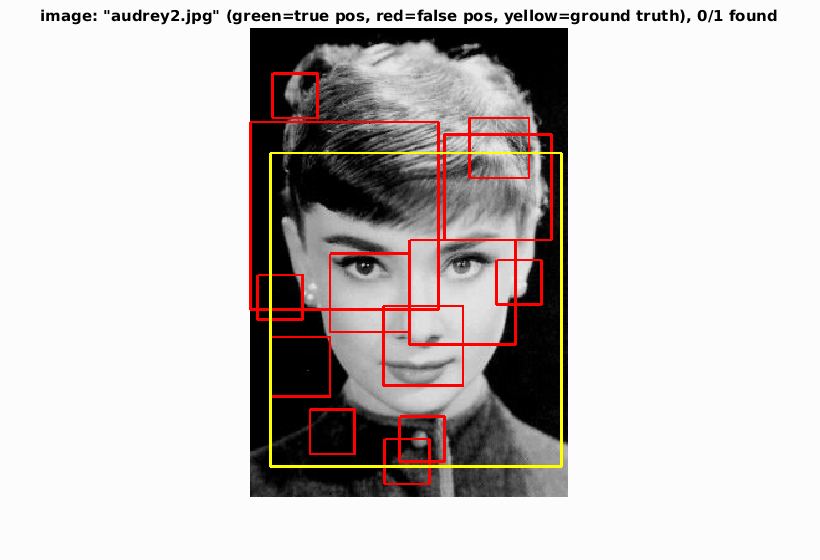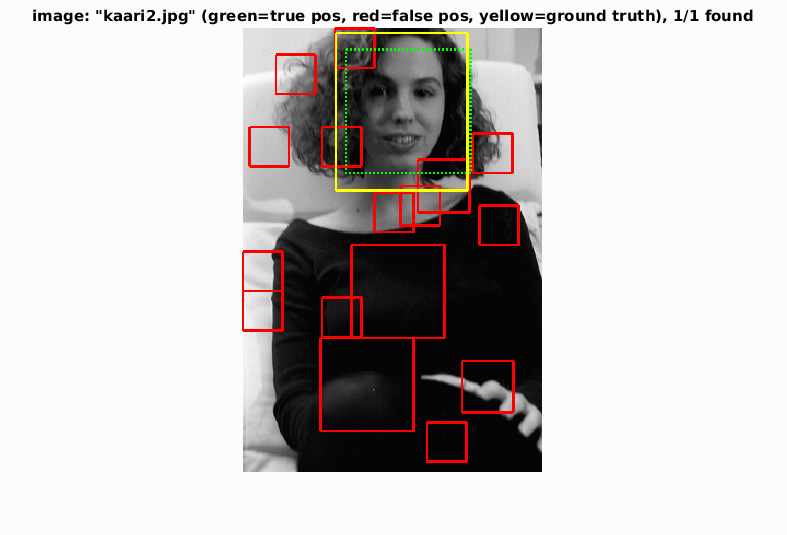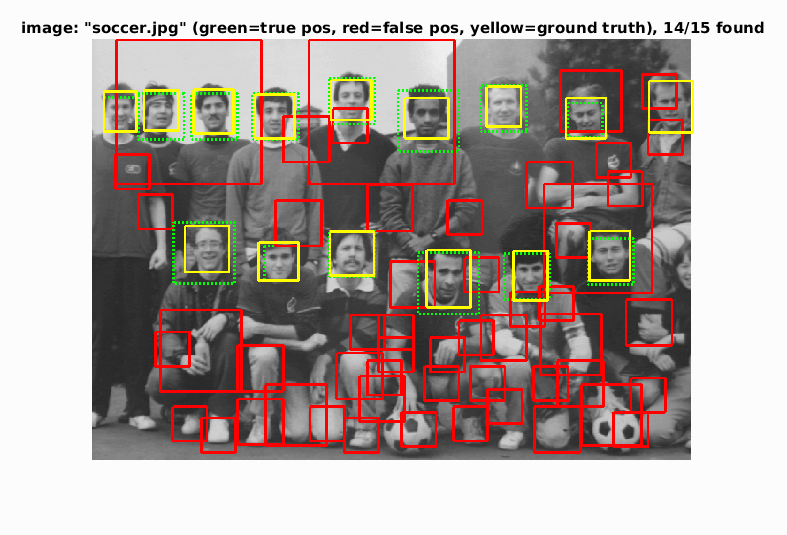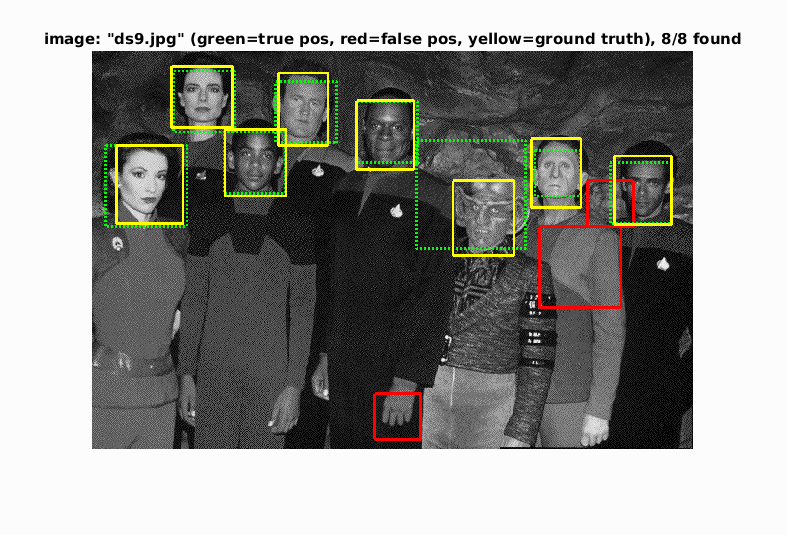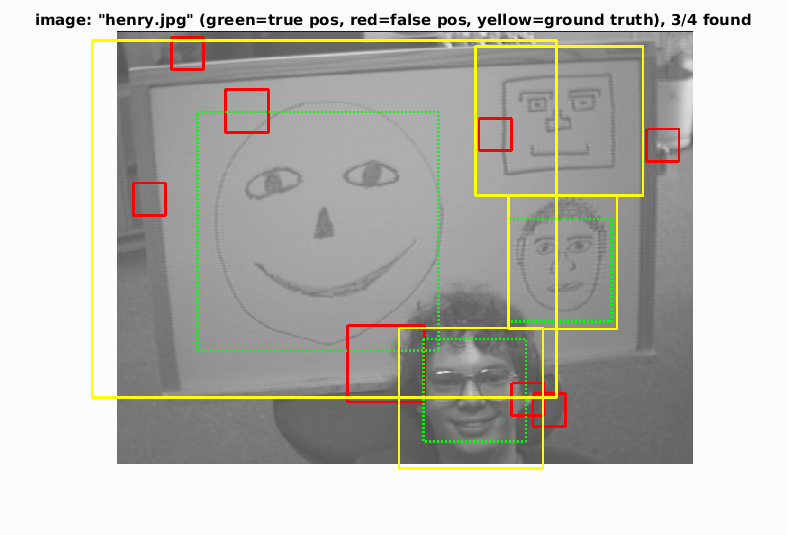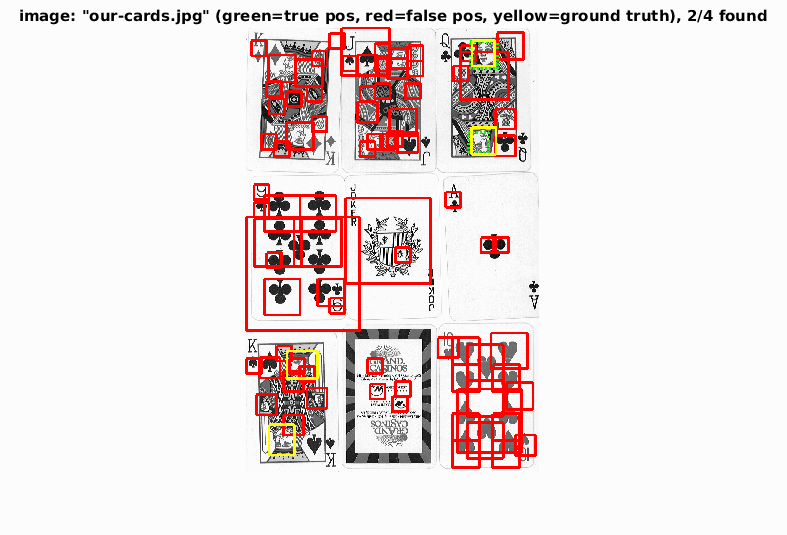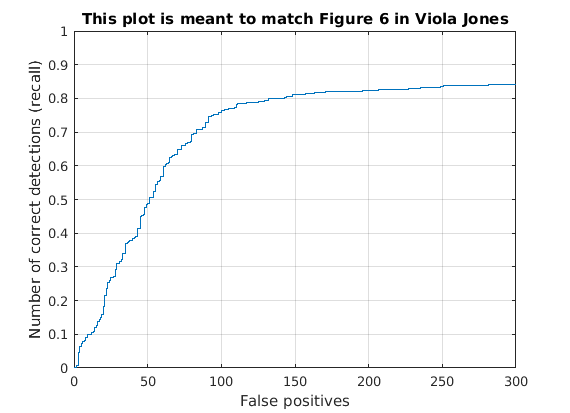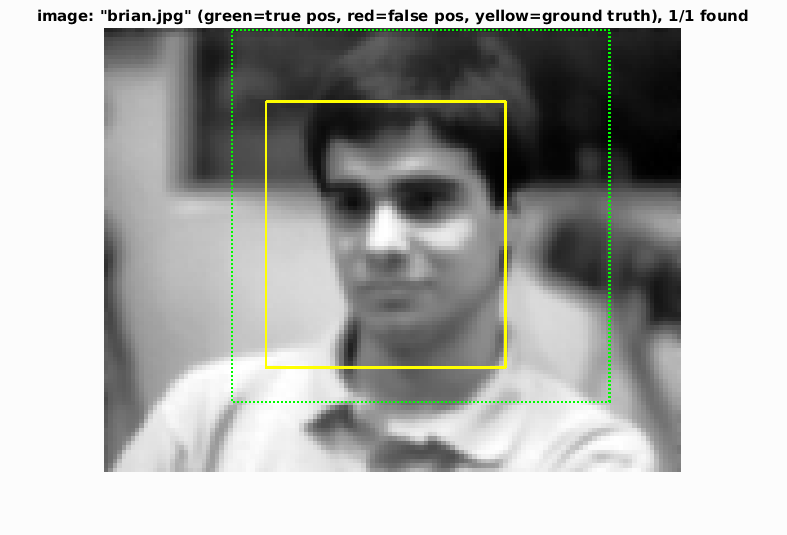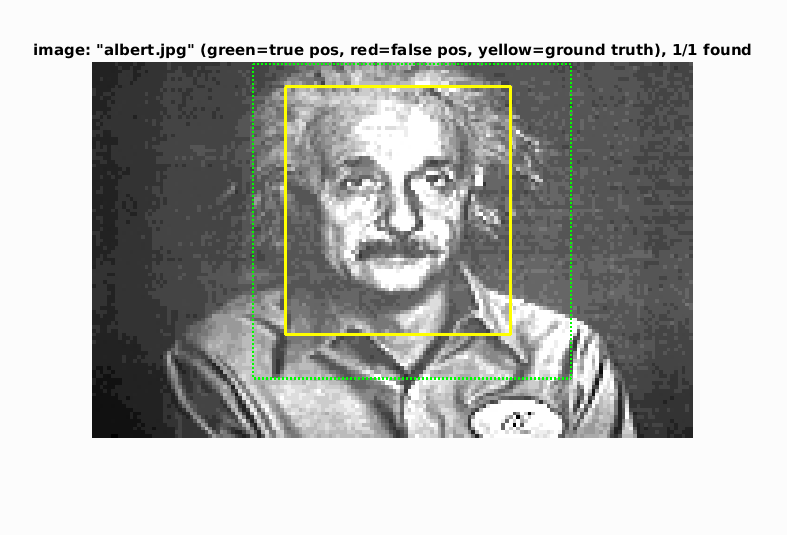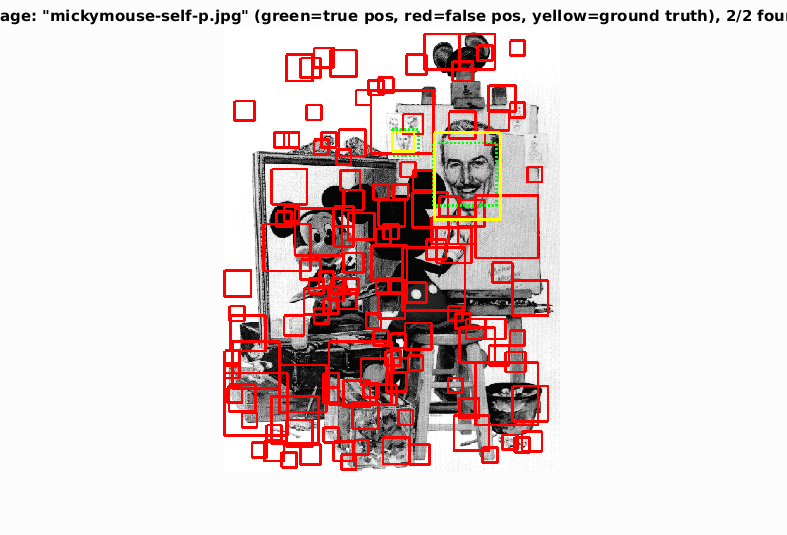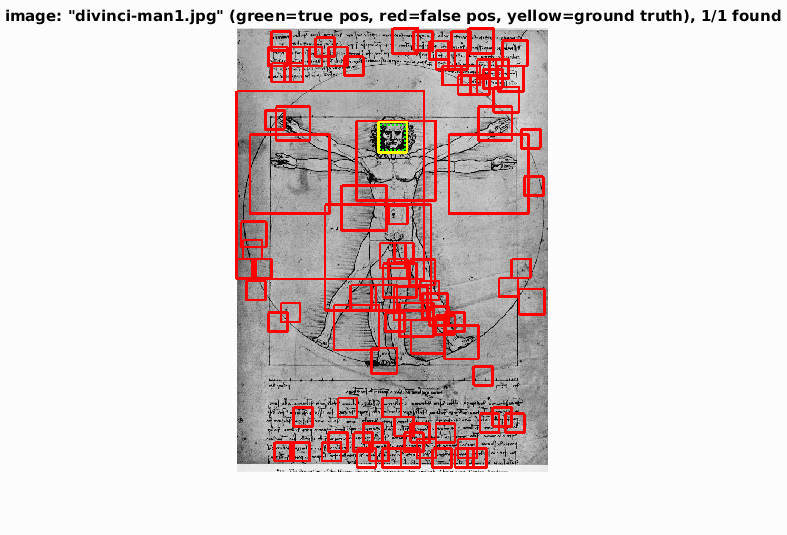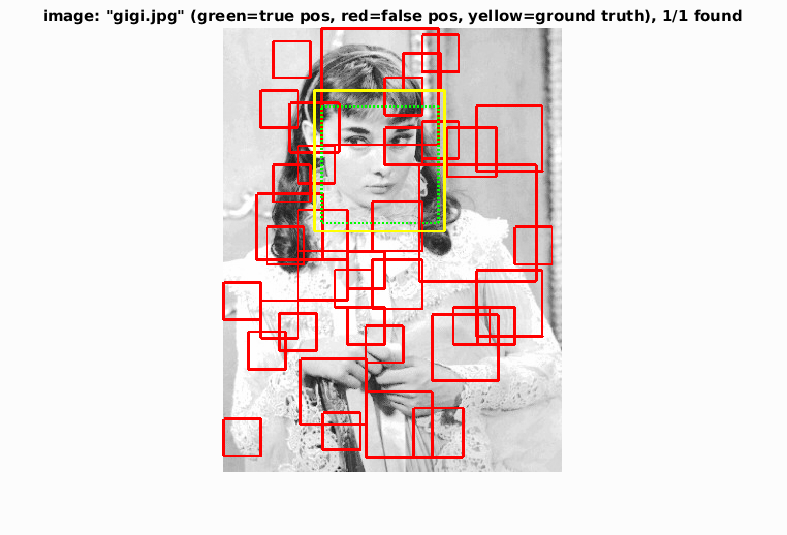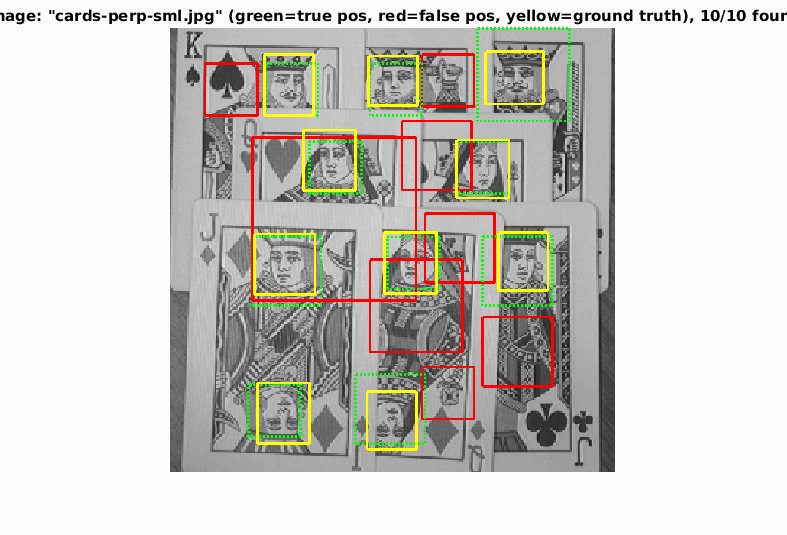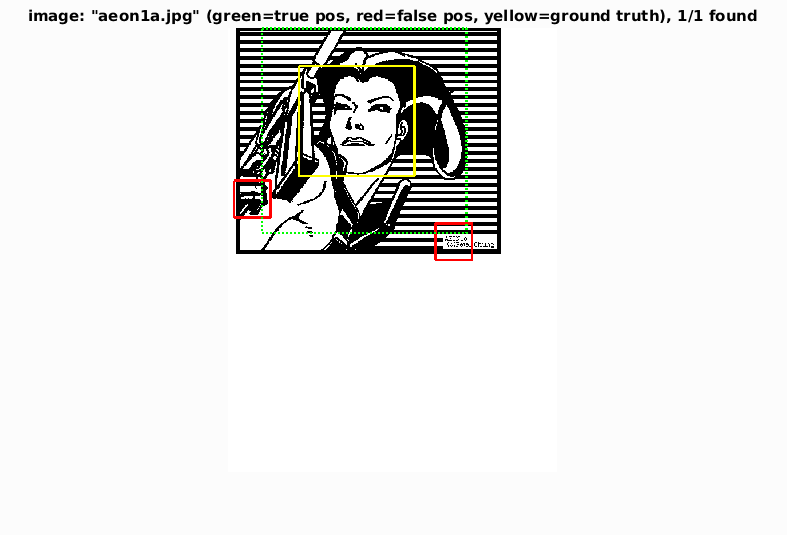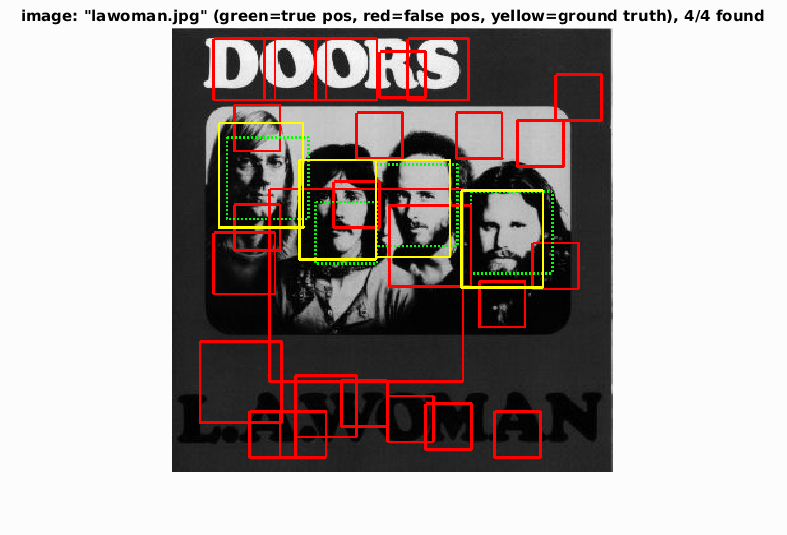Project 5 / Face Detection with a Sliding Window
Design Decisions
Get positive features
I added deformations to the faces in the training data. In particular I found
mirroring every face helped improve the classifier. Things that did not help
were:
- Adding noise, presumably this caused confusion with the background.
- Applying a median filter, this gave fewer total matches overall.
Get negative features
I implemented a multi-scale feature extractor which checks 7 different scales
of images. It picks a random set of features from each scale to add to the
negative training samples.
Run detector
There are two possible detectors: the normal SVM and also a feedforward neural
network. I wanted to compare the two methods to see if a non-linear classifier can
improve on the SVM.
Evaluation
SVM classifier
Objective Performance
Objectively the classifier does pretty decently. The precision is relatively
high, but probably not good enough to be a useful face detector in real
applications. What's remarkable is that the highly positive
HOG features create a very convincing outline of a face. Edges that are
not at all face-shaped are given very negative weights. Vertical edges in
particular seem to be very unface-like.
Subjective Performance
Best Matches
Holistically, some of the best matches were the images with a single face. This
makes intuitive sense since the training set were very similar to these images.
Worst Matches
Noisy or busy images had a lot of false-positives. Sharp lines that correspond
to faces can fool the SVM. And unfortunately, despite the
detector working well on single faces it still misses some. The picture of
Aubrey's face has been particularly challenging to find, partly because it is
a large image and requires a large scale detector.
Interesting Matches
The Deep Space 9 image is interesting, because the face detector successfully
matches the alien's face. It is also good at detecting roundly drawn faces, but
not square robots. In the cards picture it found the Queen's faces, but not
the King's. The detector also seems to almost perfectly detect letters as seen
in the Police album, despite being trained on faces.
Increasing the number of negative samples
By tripling the number of negative samples from 10,000 to 30,000 precision
increased slightly:
Without glasses, the HOG features look kind of like a skull with its mouth open.
Decreasing the threshold
By keeping the number of negative training samples the same and decreasing the
threshold from 0.0 to -0.2, the precision goes up even more. This is likely
because some faces are close to the SVM boundary, so they get misclassified
easily.
Neural Networks
To compare the SVM to a nonlinear classifier, I trained a feedforward neural
network with two hidden layers: 100 nodes and 10 nodes respectively.
Objective Performance
Surprisingly the neural network performed worse. I believe this could be due to
insufficient training data. The SVM performs well on small amounts of
data, but a neural network needs more to be effective. The neural network is
also more prone to over-fitting, which could cause lower accuracy on the
testing set.
Subjective Performance
Best Matches
The best matches are still single faces. This is very likely because the testing
data closely resembles the positive training data.
Worst Matches
These matches are particularly bad because of the large number of false positives.
Once again the Audrey Hepburn photo gets unrecognized. The number of scales I
have are not big enough to capture it. You can see in some of the pictures it
is identifying totally empty space as a face.
Interesting Matches
Interestingly, the neural network gets all of the faces in the cards... but also
a lot of non-faces. It also recognizes drawn images and in the "DOORS" text it
finds almost perfectly all of the letters in the text.

